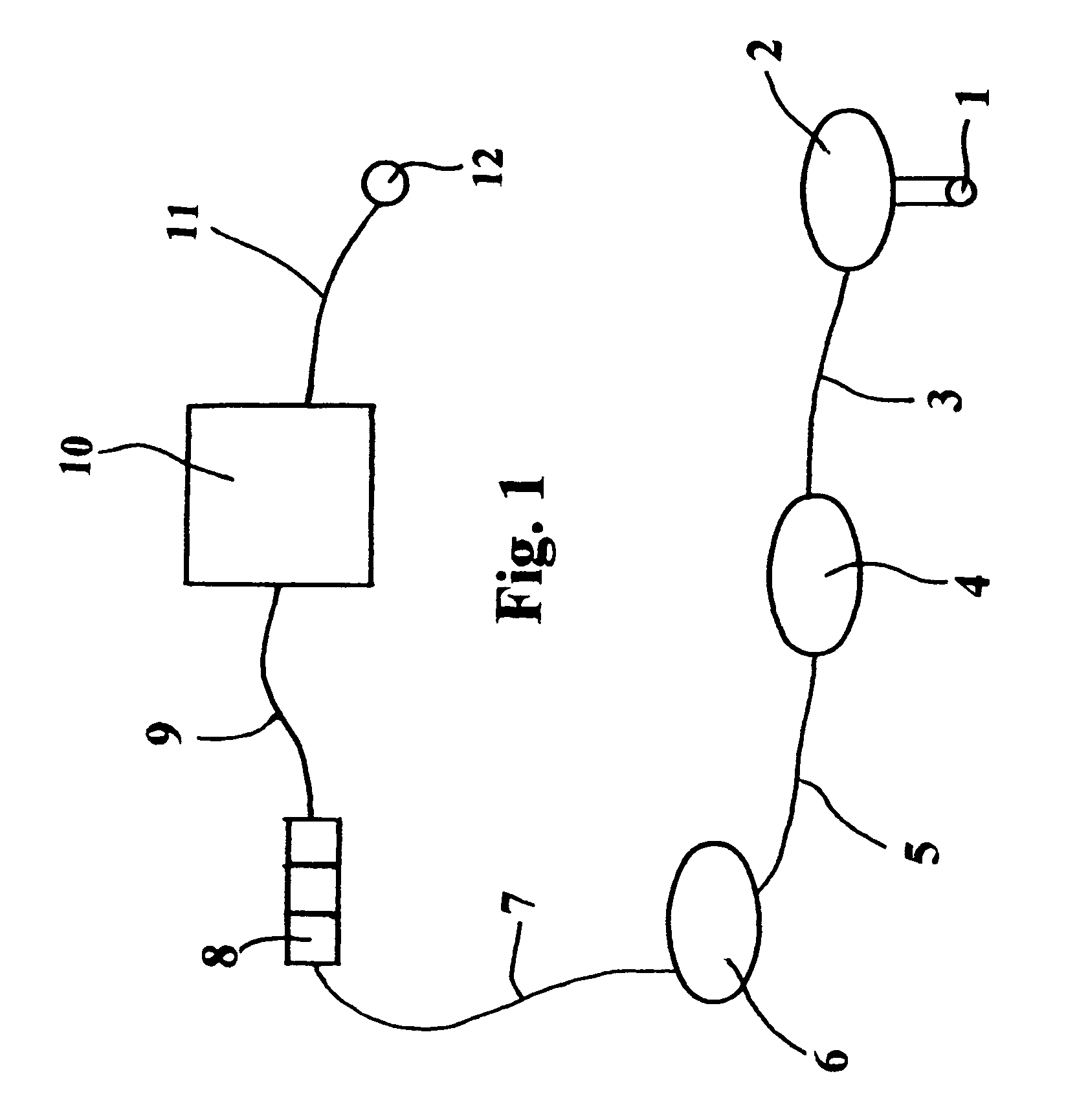Steam powered hybrid vehicle
a hybrid vehicle and steam technology, applied in the field of power, can solve the problems of low efficiency of fuel cells, inefficient conversion of energy stored in gasoline by internal combustion engines, and inefficient current production vehicles using internal combustion engines and other problems, to achieve the effect of low cost of manufacture, easy and efficient manufacturing and marketing, and durable and reliable construction
- Summary
- Abstract
- Description
- Claims
- Application Information
AI Technical Summary
Benefits of technology
Problems solved by technology
Method used
Image
Examples
Embodiment Construction
[0073]FIG. 1 shows the inter-connecting component parts starting with the fuel input line 1 connecting to fuel tank 2, fuel line 3 connecting to boiler / burner 4 and heater line 5 connecting to steam engine 6. Cable 7 connects steam engine 6 to batteries 8 while cable 9 connects the batteries 8 to electric engine 10. Cable 11 connects the electric engine 10 to the ignition 12.
[0074]As to the manner of usage and operation of the present invention, the same should be apparent from the above description. Accordingly, no further discussion relating to the manner of usage and operation will be provided.
[0075]With respect to the above description then, it is to be realized that the optimum dimensional relationships for the parts of the invention, to include variations in size, materials, shape, form, function and manner of operation, assembly and use, are deemed readily apparent and obvious to one skilled in the art, and all equivalent relationships to those illustrated in the drawings and...
PUM
 Login to View More
Login to View More Abstract
Description
Claims
Application Information
 Login to View More
Login to View More - R&D
- Intellectual Property
- Life Sciences
- Materials
- Tech Scout
- Unparalleled Data Quality
- Higher Quality Content
- 60% Fewer Hallucinations
Browse by: Latest US Patents, China's latest patents, Technical Efficacy Thesaurus, Application Domain, Technology Topic, Popular Technical Reports.
© 2025 PatSnap. All rights reserved.Legal|Privacy policy|Modern Slavery Act Transparency Statement|Sitemap|About US| Contact US: help@patsnap.com


